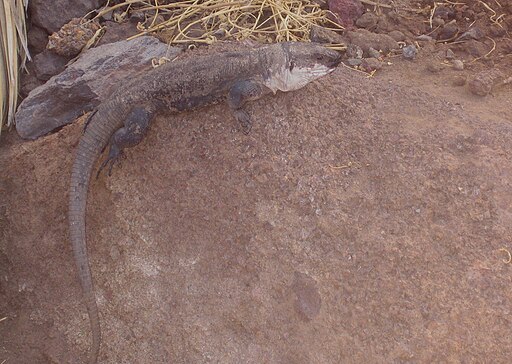Just 17 years ago, it was believed that the giant lizard of Gomera was extinct. Only proof of its existence by the fossils found, which were to reveal it had, in the past there were copies of more than one meter in length and living scattered around the central and lower area of the island of La Gomera.
In July 1999, a team of zoologists at the University of La Laguna, rediscovered the giant lizard of La Gomera thanks to the testimonies of some residents of Valle Gran Rey, who claimed to have seen and even captured.
The giant lizard of La Gomera (La Gomera Giant Lizard) is a large lizard, which can be between 1.90 m head and body long. This species is endemic to the island of La Gomera and scientific name is due to the canary paleontologist and geologist Telesforo Bravo.
His peaceful life was altered by the arrival of humans about 3,000 years ago and especially of European settlers from S.XV. The human presence, had a strong impact on the territory, disappearing forests of dragon trees, pine trees, seedlings, cardinals … In addition to deforestation, also contributed to its decline and near disappearance, the introduction of the goat, sheep, pig, rat , Dogs and cats. All this has led them to seek refuge could say almost to hide in ravines and cliffs of difficult access.
Their biggest threats are the animals introduced by man. Cats (and specifically the feral cat) have been and still are the main predators of giant lizard, and the latter for its size and slow movements make it easy prey.
Rats can eat the eggs and destroy the up-to unearth and goats can sometimes be dangerous for another giant lizard, especially in periods of drought or scarcity of resources predator.
Currently there are two populations, one in “the Recovery Centre for the Giant Lizard of the Gomera” (where captive breeding) and the other in its natural habitat in the cliff of Merica, both located in the municipality of Valle Gran Rey. Today, we can say that the future of this species is much more hopeful than a few years ago, but remains one of the most endangered species in the world.

